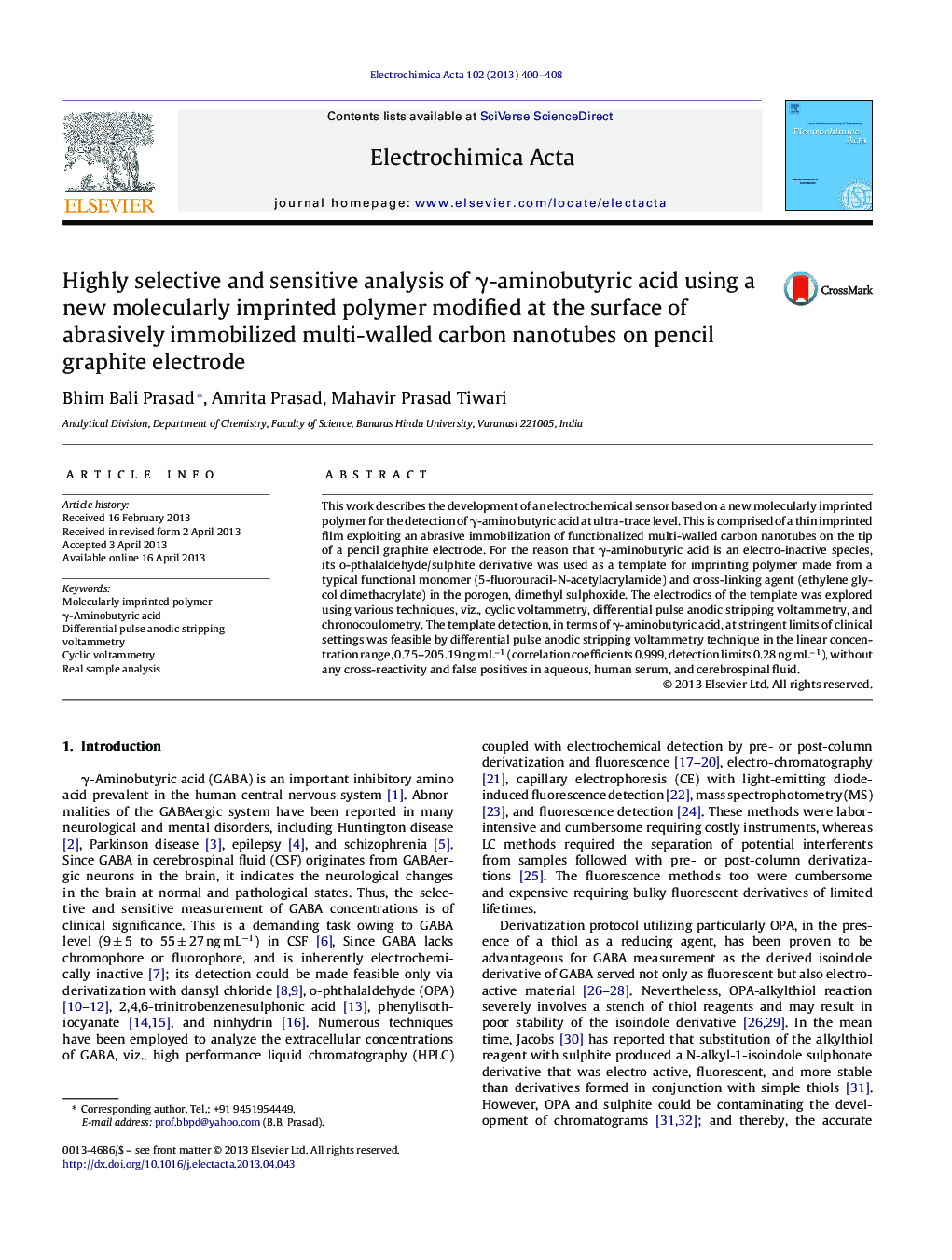| کد مقاله | کد نشریه | سال انتشار | مقاله انگلیسی | نسخه تمام متن |
|---|---|---|---|---|
| 187300 | 459639 | 2013 | 9 صفحه PDF | دانلود رایگان |

• A new MIP-based electrochemical sensor was fabricated for the detection of GABA.
• The o-pthalaldehyde/sulphite derivative of GABA was used as a template.
• 5-FUAA was used as a functional monomer for MIP development.
• 5-FUAA has ability to impart bioactivity and lower toxicity to MIP film.
• LOD 0.28 ng mL−1 was useful especially for diagnosis of GABA-deficient diseases.
This work describes the development of an electrochemical sensor based on a new molecularly imprinted polymer for the detection of γ-amino butyric acid at ultra-trace level. This is comprised of a thin imprinted film exploiting an abrasive immobilization of functionalized multi-walled carbon nanotubes on the tip of a pencil graphite electrode. For the reason that γ-aminobutyric acid is an electro-inactive species, its o-pthalaldehyde/sulphite derivative was used as a template for imprinting polymer made from a typical functional monomer (5-fluorouracil-N-acetylacrylamide) and cross-linking agent (ethylene glycol dimethacrylate) in the porogen, dimethyl sulphoxide. The electrodics of the template was explored using various techniques, viz., cyclic voltammetry, differential pulse anodic stripping voltammetry, and chronocoulometry. The template detection, in terms of γ-aminobutyric acid, at stringent limits of clinical settings was feasible by differential pulse anodic stripping voltammetry technique in the linear concentration range, 0.75–205.19 ng mL−1 (correlation coefficients 0.999, detection limits 0.28 ng mL−1), without any cross-reactivity and false positives in aqueous, human serum, and cerebrospinal fluid.
Figure optionsDownload as PowerPoint slide
Journal: Electrochimica Acta - Volume 102, 15 July 2013, Pages 400–408